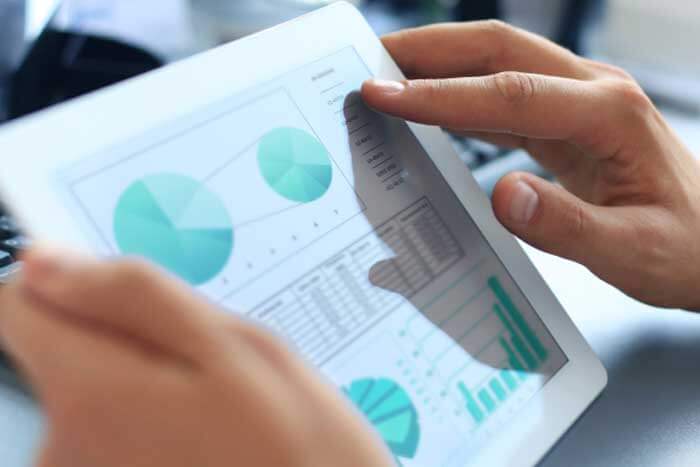“You say tomato, I say tomato; you eat potato, I eat potato.Tomato, tomato; potato, potato. Let’s call the whole thing off!”
Just as there’s a clear difference between how people pronounce the same words, there’s an important difference between analysis and analytics. A lack of understanding can affect how marketers’ ability to leverage customer intelligence to their best advantage.
According to Merriam-Webster dictionary, analysis is the separation of a whole into its component parts, and analytics is the method of logical analysis. Marketers leverage both to drive all types of decisions, and each specific application supports the unique insight challenges inherent in dissecting customer behaviors.
One way to distinguish the difference between analysis and analytics is to think in terms of past and future. Analysis looks backwards over time, providing marketers with a historical view of what has happened. Typically, analytics look forward to model the future or predict a result.
Both analysis and analytics provide the insight marketers use to value customers accurately, target the right audience, and improve the effectiveness of their marketing budget. And both help marketers transform customer data by exploring and analyzing that data to help uncover unknown patterns, opportunities and insights that can drive proactive, evidence-based decision making.
How marketers use analysis
How many customers responded to my offer? How did my campaign perform over all? How many new loyalty program sign ups did we get last year? What is my customer retention rate?
It may seem easy for marketers to answer these questions, but what makes analysis valuable is the ability to slice and dice the answers in several ways. This provides multiple micro views to reveal deeper customer insight.
Take, for example, the question, “How did my marketing program perform?” A high-level report may produce the number of customer messages sent, the number customers responding, the response rate, and the revenue generated from the campaign. But, through careful analysis a marketer can learn how customers responded by segment, by store, by geography, by datedrilling deeper and deeper to understand customers at a more individual level.
Analysis also helps marketers understand how their programs are impacting customer metrics. This time, let’s take customer retention as an example. The overall retention rate shows a company-wide metric. But dissect what’s behind the retention metric by individual customer segments or by loyalty members or by region and an understanding of which customers are driving that retention rate begins to emerge. Additionally, comparing metrics quarter over quarter, month over month, week over week-whatever time frame aligns with your business-is an analysis exercise that can determine the impact of your marketing programs. Watch metrics over time and trends will appear, providing even more valuable insight.
Marketers commonly use many types of analyses, including customer segmentation, attrition drivers, and market-basket analysis (identifying what’s been purchased by customers). Business intelligence tools support the drill down requirements marketers need to glean these insights. However, more common is a query process where reporting goes back and forth between the technology and marketing teams until an actionable insight surfaces.
How marketers use analytics
Referring again to Merriam-Webster, analytics is defined as the method of logical analysis. A method of logical analysis is typically performed through use of algorithms, which are applied as the “advanced logic” separation of the whole into component parts. This applied logic yields a more comprehensive result based on statistical relevance and helps the marketer by modeling what will happen next or by forecasting what will happen if a trend continues.
For example, advanced segmentation strategies use analysis to group customers based on multiple past behaviors. Customer retention can be improved by then using analytics to predict which customers are in danger of defecting. Predicting the next best product or service can increase revenue and profitability per customer, as well as increase relevancy of your message. Recommendation engines, like we see on many ecommerce sites today, are a form of predictive analytics. Just as marketers use analysis to understand which customers are responding to marketing programs, they can use analytics to predict which customers are most likely to respond, thereby optimizing the marketing budget.
Sophisticated predictive analytics software tools best support these efforts and are typically used by trained statisticians versus the marketing practitioner. While analysis and business intelligence tools support ongoing daily analysis, analytics tend to be outsourced as special projects, unless an in-house capability is available.
Both are important
While analytics is the method needed to better predict customer behaviors, analysis is the process required to answer key strategic questions, and both are important to the marketer. By combining analytics and analysis, marketers can achieve a better understanding of their customers. Using analytics to dissect customer data, marketers can identify behaviors and trends and formulate more relevant, targeted offers and communications to address those trends. With analysis, marketers are able to evaluate the results of their efforts and apply these insights to determine success or make changes. Tomato, tomato; potato, potato; analysis, analytics-while there is a difference, they coexist in harmony!
About the Author: Connie Hill is president and founder of VeraCentra

